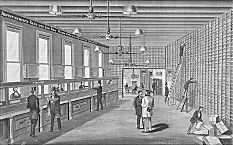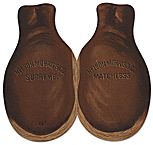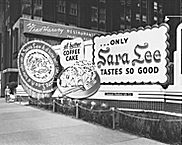| Entries |
| A |
|
Advertising
|

|

|
The shift of advertising to the Midwest was stunning. In the 1860s and 1870s, only about 5 percent of the nation's advertising came from west of Philadelphia and New York City. By 1906, 45 percent of all nonlocal advertising in the nation originated west of Buffalo.

|
Lasker sold the public on the idea of orange juice (people previously only ate oranges), built brands such as Goodyear and Van de Kamps, established a “records of results” department that monitored its clients' advertising impact with catalog-response precision, and even used advertising to help defeat Woodrow Wilson's League of Nations. Advertising legend David Ogilvy rightly ranked Lasker as one of the “six giants of modern advertising.”
The most legendary American advertising copywriter was Lord & Thomas's Claude C. Hopkins. In his popular autobiography, My Life in Advertising (1927), Hopkins captured the populist style of Chicago advertising as literature for the common people. Hopkins is probably the father of consumer advertising for branded goods. He dubbed Schlitz the “beer that made Milwaukee famous,” created unparalleled brand equity for Palmolive soap and Pepsodent toothpaste, wrote the “shot from guns” slogan for Quaker Oats, and invented free product sampling through print coupons. Hopkins penned the most influential book ever written about advertising— Scientific Advertising (1923).

|
The other great modern Chicago ad agency was the Leo Burnett Company. Burnett started the agency in 1935, mortgaging his house in the midst of the Great Depression. In 1989 the agency claimed $3.2 billion annual billings and maintained offices in over 40 countries. Burnett's television campaigns included the Jolly Green Giant, the Pillsbury Dough Boy, Charlie Tuna, Tony the Tiger, and the Marlboro Man. Advertising Age ranked Burnett the third most influential person in the history of American advertising.
The Chicago Tribune was third nationally among newspapers in total advertising linage from the 1920s into the 1950s, creating and placing ads for thousands of its retail customers. Advertising Age, the best advertising trade magazine in the world, was started in the Windy City in 1930. The magazine's critical style set the standard for business Journalism across the country.
By 1980, advertising was among the largest industries in Chicago, with 8,000 employees in over 500 agencies and $6 billion in revenues. Writer and sociologist Hugh Dalziel Duncan called Chicago the nation's home of “commercial magicians and priests of consumption.” Chicagoans turned consumption into a “token of an infinitely expanding future of bigger and better things” that people must buy. Chicago businesspeople understood that “the power of style in America is derived from its power to communicate to others ... our power to spend freely and frequently.”
The Encyclopedia of Chicago © 2004 The Newberry Library. All Rights Reserved. Portions are copyrighted by other institutions and individuals. Additional information on copyright and permissions.